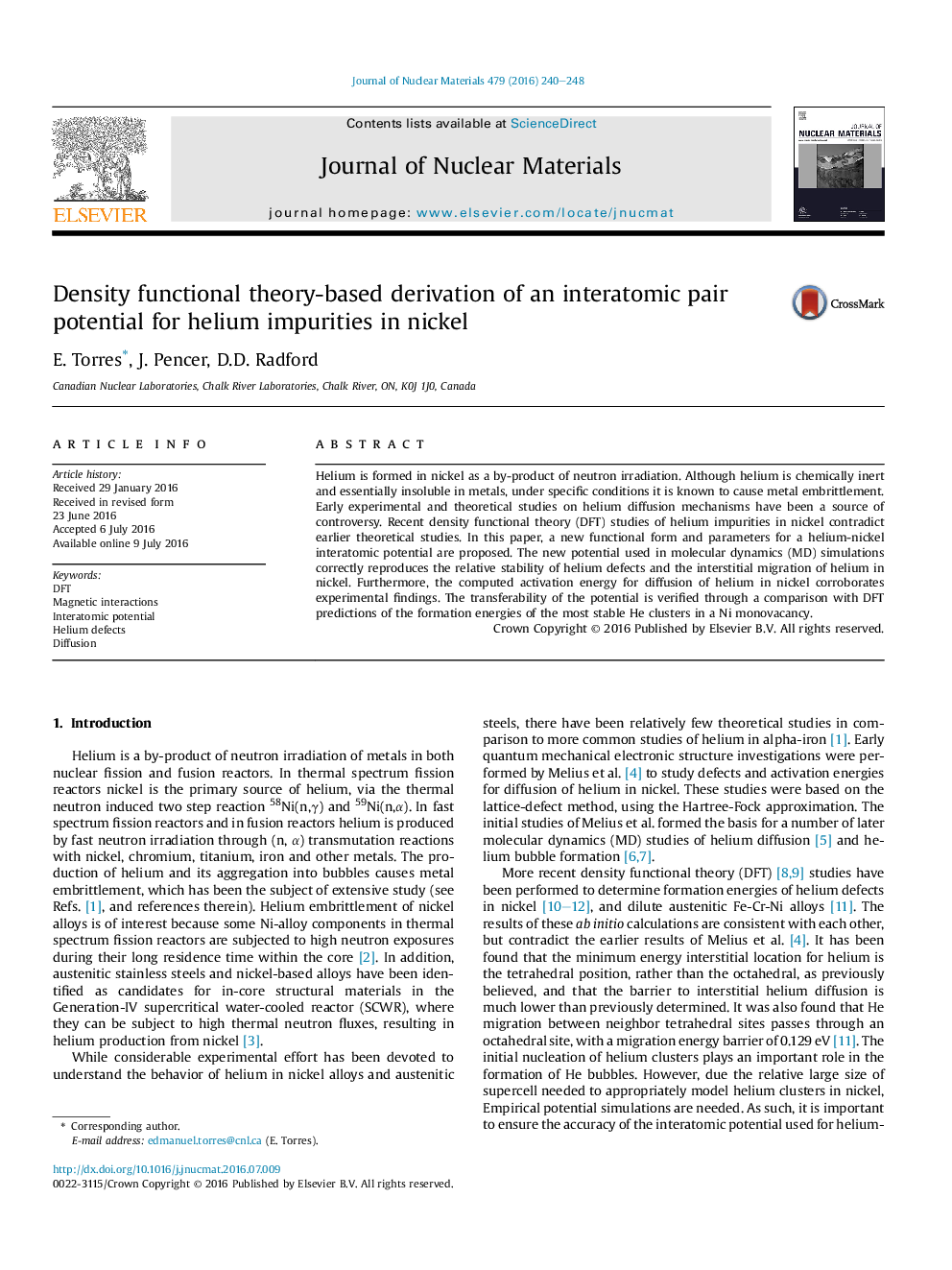| Article ID | Journal | Published Year | Pages | File Type |
|---|---|---|---|---|
| 7964076 | Journal of Nuclear Materials | 2016 | 9 Pages |
Abstract
Helium is formed in nickel as a by-product of neutron irradiation. Although helium is chemically inert and essentially insoluble in metals, under specific conditions it is known to cause metal embrittlement. Early experimental and theoretical studies on helium diffusion mechanisms have been a source of controversy. Recent density functional theory (DFT) studies of helium impurities in nickel contradict earlier theoretical studies. In this paper, a new functional form and parameters for a helium-nickel interatomic potential are proposed. The new potential used in molecular dynamics (MD) simulations correctly reproduces the relative stability of helium defects and the interstitial migration of helium in nickel. Furthermore, the computed activation energy for diffusion of helium in nickel corroborates experimental findings. The transferability of the potential is verified through a comparison with DFT predictions of the formation energies of the most stable He clusters in a Ni monovacancy.
Related Topics
Physical Sciences and Engineering
Energy
Nuclear Energy and Engineering
Authors
E. Torres, J. Pencer, D.D. Radford,
